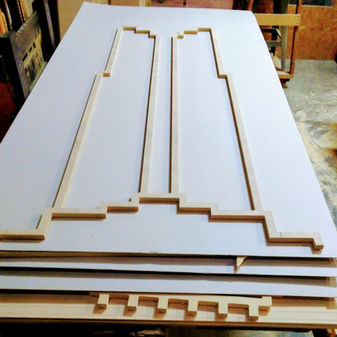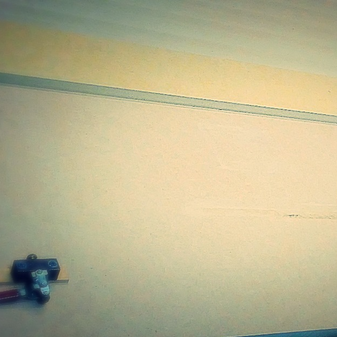top of page
HOW TO HOLD DOWN & CUT SMALL PARTS ON A CNC ROUTING TABLE
TIPS & TRICKS TO MAXIMIZE THE USE OF MATERIAL THROUGH NESTING, TOOLPATHING AND PROPER HOLD DOWN TO THE CNC ROUTING TABLE



Ideally all material would be cut using the same tools, toolpaths and strategy without program or physical change. Realistically even cutting on the flatter materials like melamine or MDF, small parts can be difficult. When cutting small parts regardless of the type of material, friction induced movement is always a concern.
Precision Fablab uses a vacuum suction table for CNC routing. This allows for most materials to be securely held for a CNC router cut job. All materials have a suggested way to be cut by the manufacturer of the tools to preserve the life of the tool. The raw material provider also has important insight about the cut methods recommended for different products that will avoid burning, melting or burring of the parts.
For small parts the struggle is lack of mass density and area to exert the sufficient amount of atmospheric pressure and weight to stay in place. Automated nesting software is not always efficient when dealing with all aspects such as size of the part or tool diameter. Doing a bit of research will play an important role in whether or not small parts run smoothly.
After years of machining experience, the staff at Precision Fablab has picked up a few hacks to optimize material use. We have listed below a few ways to cut detailed, small precision parts using high-speed spindles on different materials.
Toolpath:
Toolpath is completed before parts can be nested in the software. Once the parts that require CNC drilled holes, grooves etc. are toolpathed, we arrange the parts on the sheet goods within the software. We cut inside contours first, and leave the outline to run last while parts are still attached.
Tool Selection:
Using a thinner CNC router bit on very small parts could be a solution, but we make sure those parts are cut slower than usual to avoid breakage of the tool. We don't use this method as much because we prefer to keep production time, cost effective. We have tools we like to use more than others, but ramp entries could help any tool depending on the dimension of the part.
Depth of CNC Cut-out:
One method we use the most is leaving an onion skin on the outline by not cutting the full depth. Something else we do is to keep the part attached to the material by putting tabs. Tabs are a bit hard to remove from the part so we only use this when needed.
Placement:
We treat small parts as an Island and by that we mean, we isolate the parts as much as possible. We do not run small parts in corners or edges, especially if we are CNC routing acrylic parts. We CNC cut small sheet goods parts with exaggerated separation from each other. The more space left around them the better to hold them down to the table.
Part Cut Order:
This is as simple as cutting the smaller parts first, this works best when we have spread the smaller parts around in the sheet. If the parts are the same or similar, we arrange them in sections so that they can be run in sequence in a specific direction.
Holding Material:
Most people would think that having a thinner cut board between the material to be machined and the suction equipment would be best, but that would be false. We obviously want to have a smooth sacrifice board free of any debris, but the thicker the better.
Material Selection:
Flat material is best but if it’s not flat, taking a good look at the material could save a lot of time for those who use suction holding. The CNC Router operator could manipulate the orientation of the sheet to avoid cutting smaller parts in areas where suction will be difficult.
As a general rule we use adequate router bits that are not dull and the right toolpath on a good sacrifice board so parts do not move. To be completely sure sometimes we sandwich the material in a jig or screw it down to the sacrifice board. We do not use or recommend tape because it’s messy. When we use a screw or a jig, we take our time identifying the numeric position of the tool to avoid a costly machine crash.
If you have small precision parts that need CNC cut, and you don’t want to take a chance, email your cad drawing to: pecisionfablab@gmail.com and we will be happy to give you a quote for your small parts. We have plenty of experience cutting small parts. Our 5” x 12” router table is large enough to cut over-size parts as well, so keep us in mind for that also.
bottom of page
